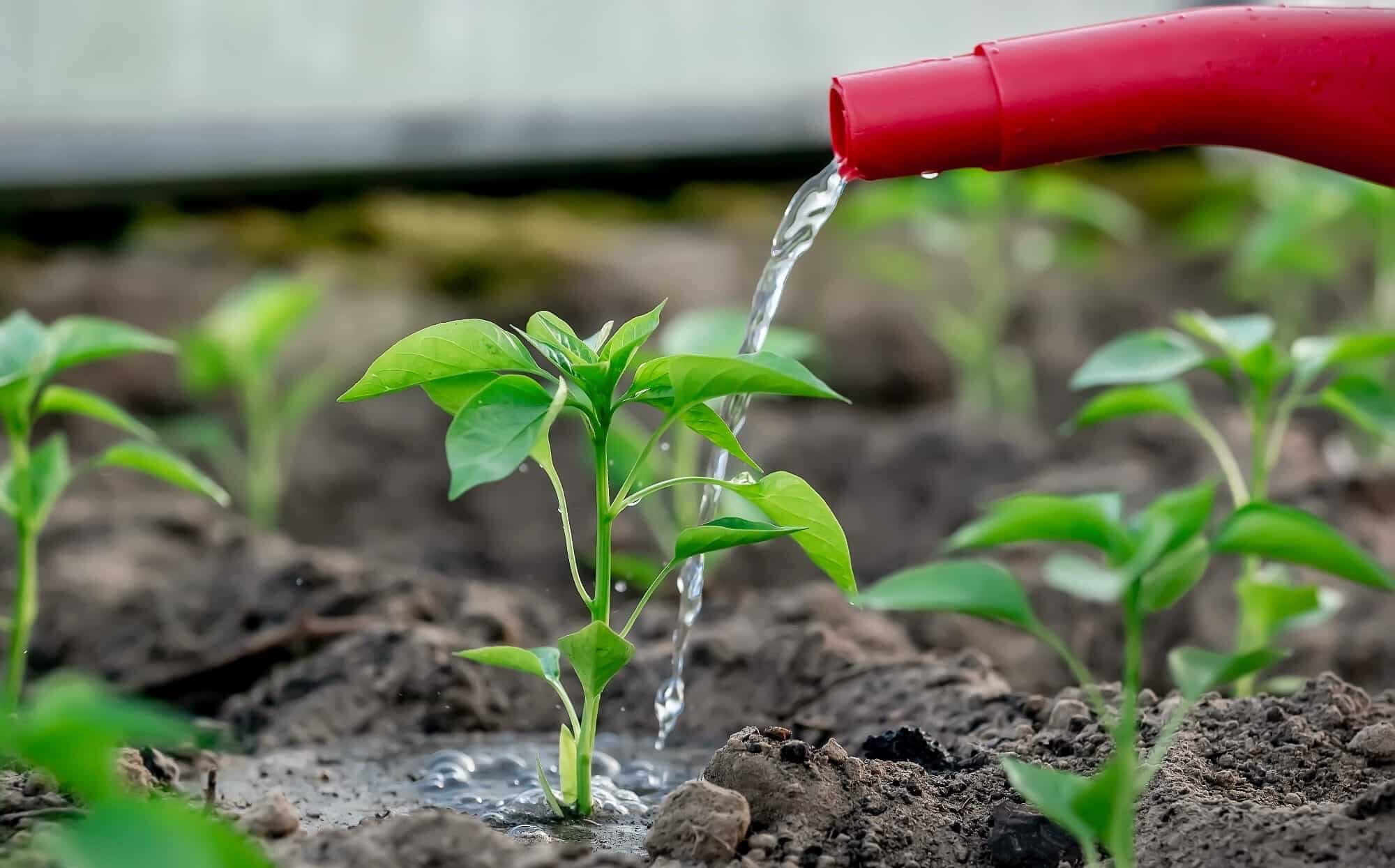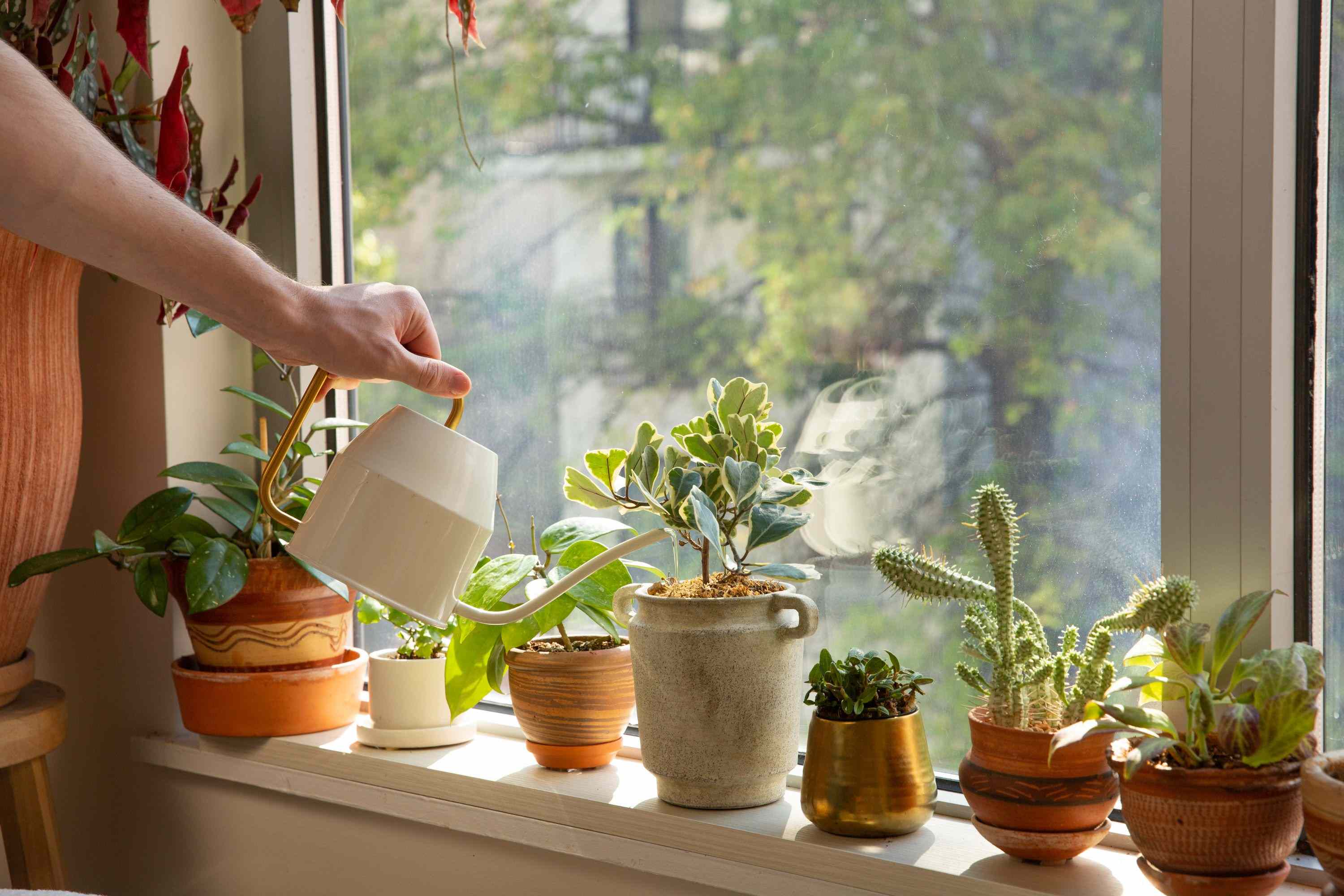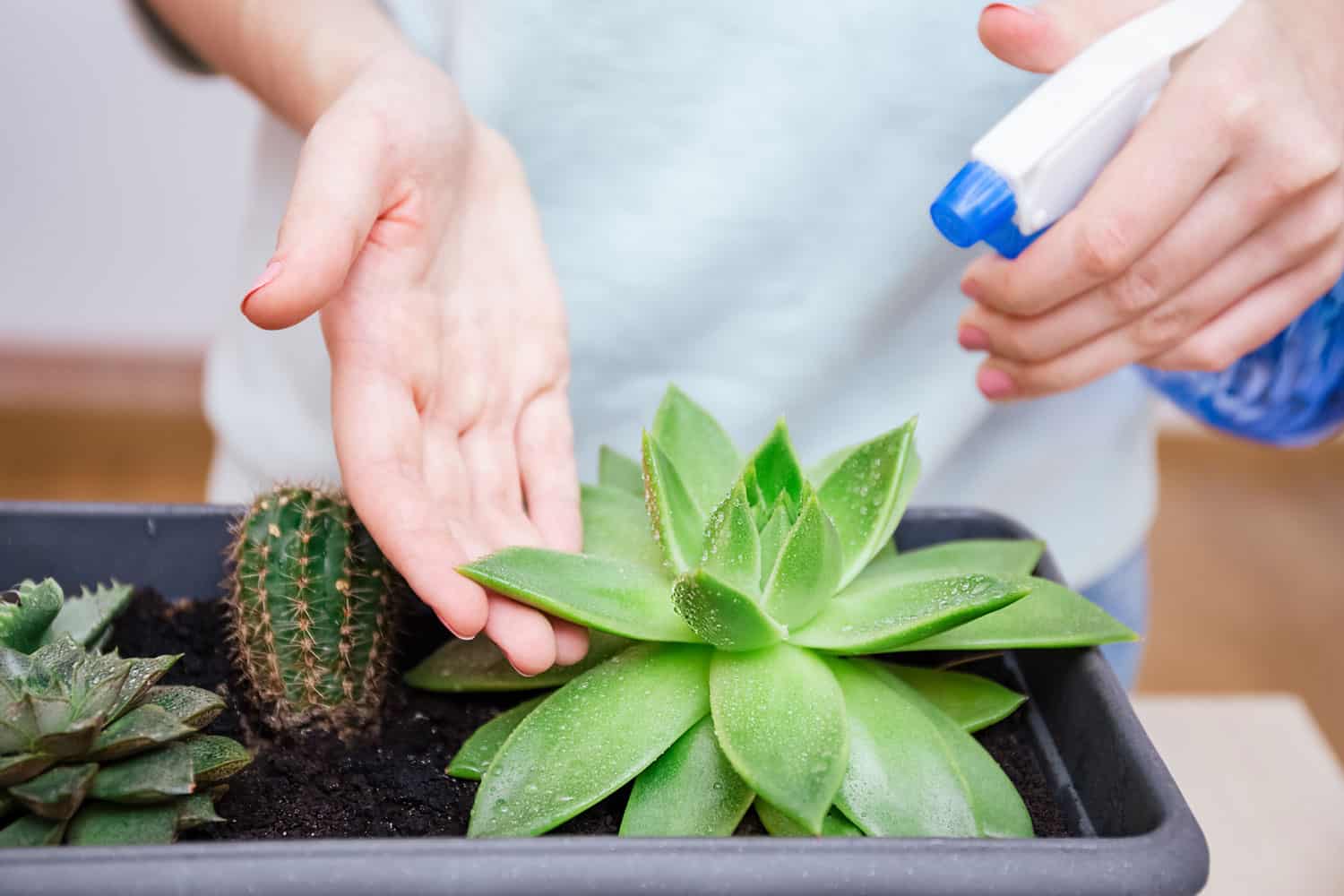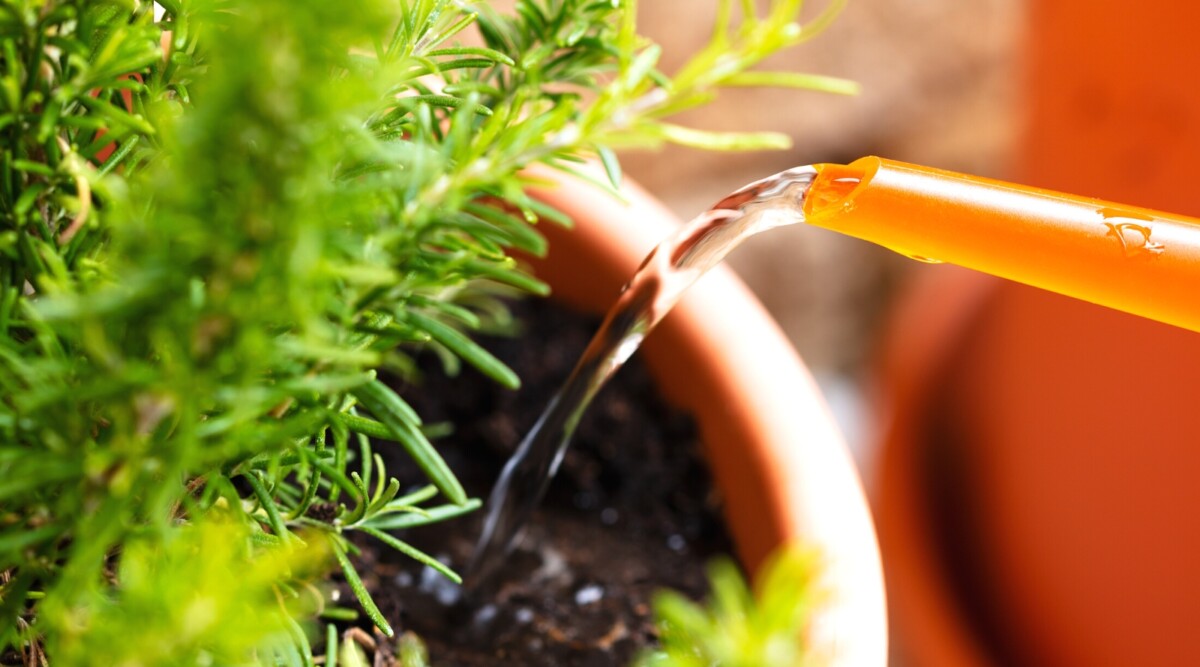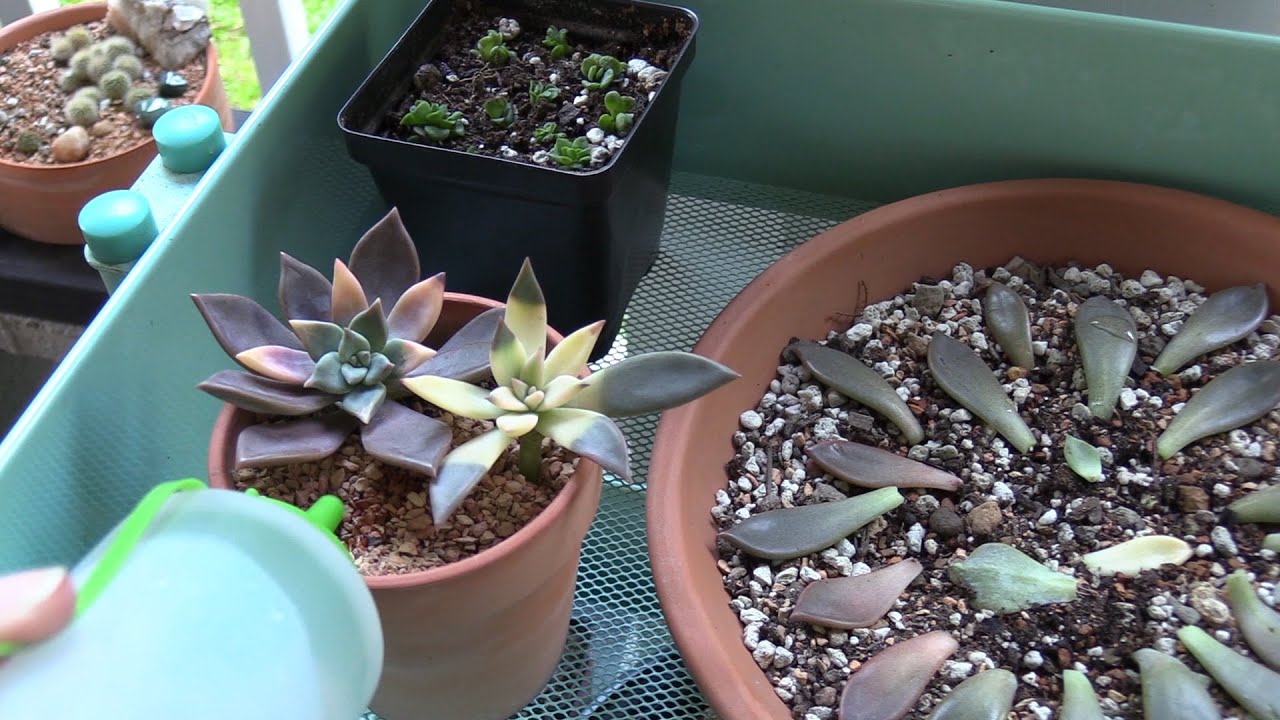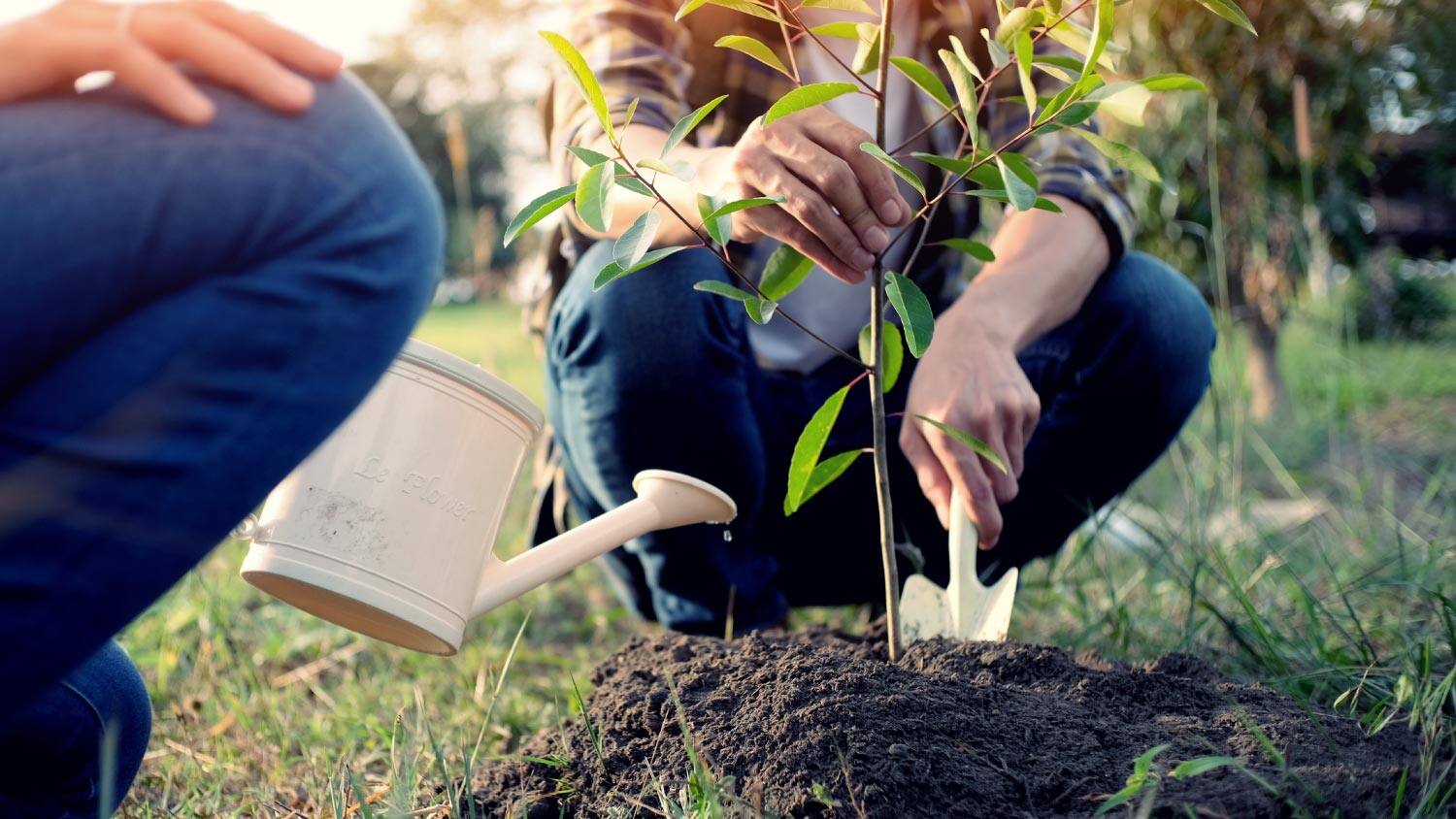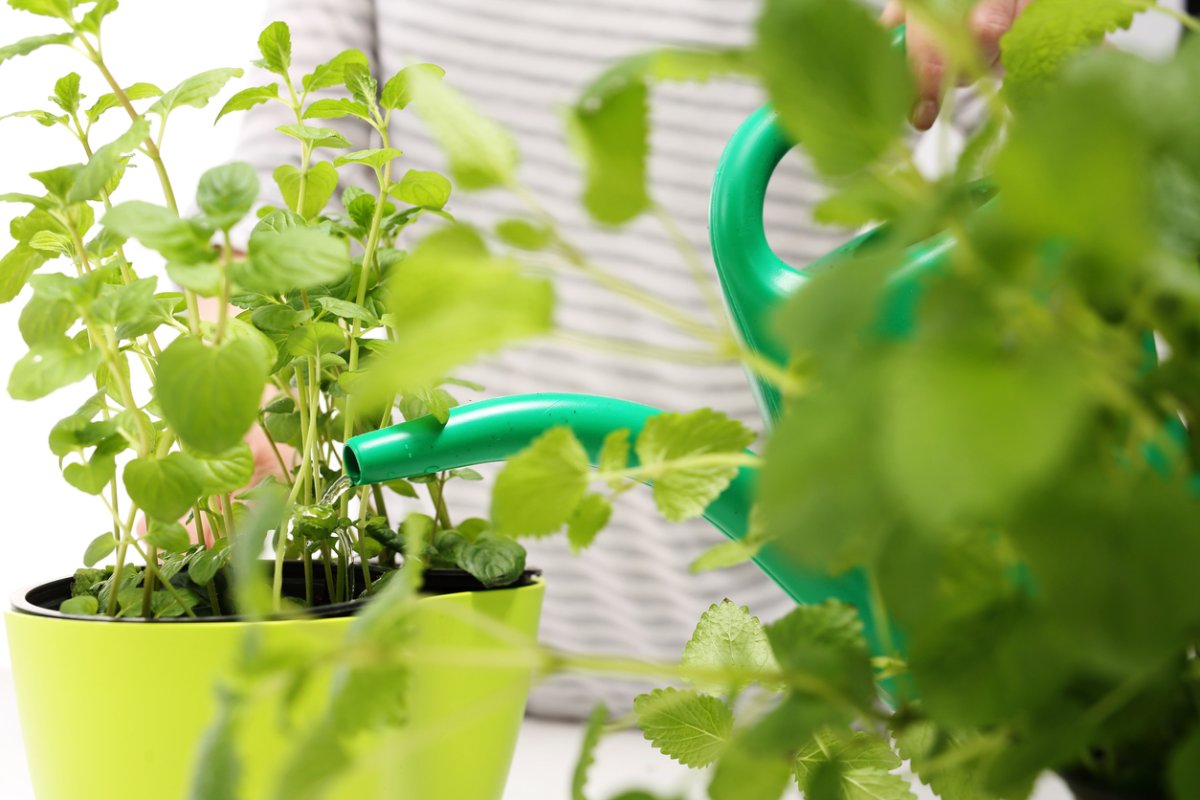Home>Gardening Techniques>Plant Care>How Often Should You Water Sunflower Seedlings
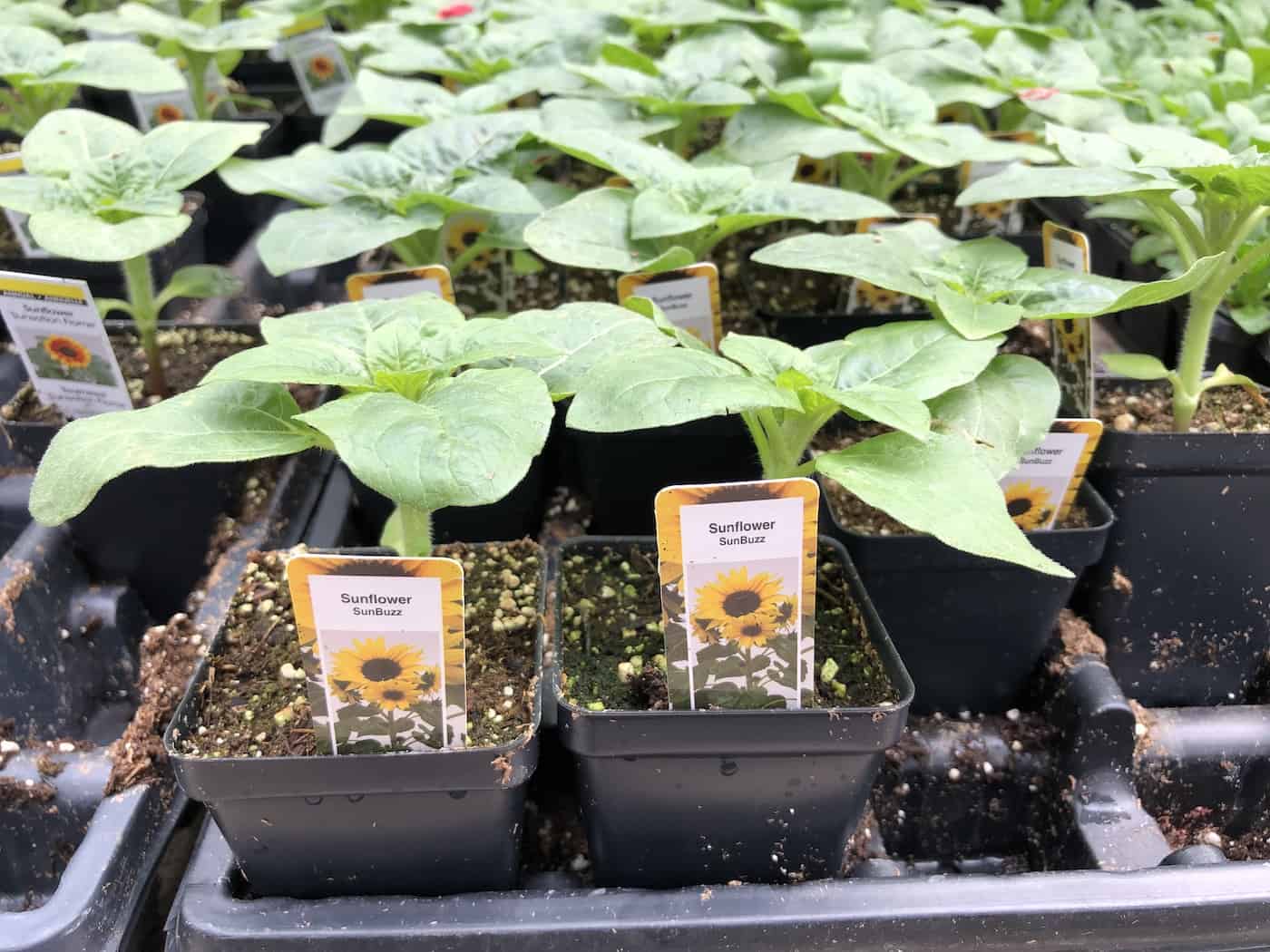

Plant Care
How Often Should You Water Sunflower Seedlings
Modified: January 22, 2024
Discover the essential plant care tips for sunflower seedlings. Find out how often you should water them to ensure healthy growth and beautiful blooms.
(Many of the links in this article redirect to a specific reviewed product. Your purchase of these products through affiliate links helps to generate commission for Chicagolandgardening.com, at no extra cost. Learn more)
Table of Contents
Introduction
Welcome to the wonderful world of gardening! If you’ve recently started cultivating sunflower seedlings, you’re on your way to growing vibrant and majestic sunflowers. However, one crucial aspect of plant care that often perplexes beginners is determining the correct watering frequency. Knowing how often to water your sunflower seedlings is essential for their growth and overall well-being.
Water is vital for any plant’s survival, and sunflower seedlings are no exception. Proper watering ensures that the seedlings receive the necessary nutrients, maintain healthy cell structure, and grow into strong and robust plants. However, finding the right balance between underwatering and overwatering can be challenging.
Various factors can influence how often you should water your sunflower seedlings. These include the weather conditions, soil type, pot size, and the overall health of the seedlings. Understanding these factors will help you make informed decisions when it comes to watering.
In this article, we will explore the different factors that affect the watering frequency of sunflower seedlings. We will also discuss the signs of both underwatering and overwatering, along with the best time of day to water seedlings and various watering techniques. By the end of this article, you’ll have the knowledge and confidence to provide your sunflower seedlings with optimal watering care.
So, let’s dive in and discover the secrets to nurturing healthy and thriving sunflower seedlings through proper watering!
Factors to Consider
Before determining how often you should water your sunflower seedlings, it’s essential to consider several factors that can influence their water requirements. By understanding these factors, you can tailor your watering routine to provide optimal care for your plants.
1. Weather Conditions: The weather plays a crucial role in determining the watering needs of your sunflower seedlings. Hot and dry weather conditions can cause the soil to dry out quickly, necessitating more frequent watering. On the other hand, cooler or humid weather may require less frequent watering as the soil retains moisture for longer periods.
2. Soil Type: The type of soil you’re using can affect its water-holding capacity. Sandy soils drain water more quickly, while clay soils tend to retain water for more extended periods. Understanding your soil type will help you adjust your watering schedule accordingly.
3. Pot Size: If you’re growing sunflower seedlings in pots or containers, the size of the pot can impact their water requirements. Smaller pots have less soil and therefore dry out faster, necessitating more frequent watering. In contrast, larger pots can hold more moisture and may require less frequent watering.
4. Seedling Health: The overall health of your sunflower seedlings can influence their water needs. Strong and robust seedlings may require more water to support their accelerated growth, while weaker or stressed seedlings may benefit from slightly less frequent watering to prevent overhydration.
5. Growth Stage: Sunflower seedlings go through different growth stages, each with varying water requirements. Young seedlings with underdeveloped root systems are more sensitive to overwatering, requiring less frequent watering. As the seedlings mature and develop stronger root systems, they can tolerate more regular watering.
6. Environmental Factors: Other environmental factors, such as wind or direct sunlight, can impact the evaporation rate and water absorption of your sunflower seedlings. Windy conditions can cause the soil to dry out more quickly, while intense sunlight can increase the water needs of the plants.
By considering these factors, you can develop a deeper understanding of your sunflower seedlings’ specific water requirements. This knowledge will serve as a foundation for establishing an appropriate watering routine to ensure their overall health and successful growth.
Seedling Watering Frequency
Now that we’ve discussed the factors that influence the watering needs of sunflower seedlings, let’s dive into determining the ideal watering frequency for these young plants. While it’s important to understand that the exact watering frequency may vary depending on the specific conditions, here are some general guidelines to help you get started.
When it comes to watering sunflower seedlings, it’s crucial to find the right balance. Underwatering can lead to stunted growth and wilting, while overwatering can suffocate the roots and promote fungal diseases. Aim to keep the soil moist but not waterlogged.
As a general rule, water your sunflower seedlings deeply and thoroughly when the top inch of the soil feels dry to the touch. Stick your finger into the soil and check its moisture level. If it feels dry at that depth, it’s time to water. On average, this watering schedule could range from two to three times per week.
However, the frequency may change depending on the factors we discussed earlier. For example, during hot and dry weather conditions, you may need to water more frequently, while cooler or humid weather may require less frequent watering.
Remember to observe your sunflower seedlings regularly. Pay attention to any signs of underwatering or overwatering, such as wilting, leaves turning yellow, or a foul smell coming from the soil. These signs can indicate that you need to adjust your watering frequency.
Additionally, it’s important to note that seedlings in small pots or containers may require more frequent watering compared to those in the ground. The smaller volume of soil in the pot can dry out more quickly, so monitor the moisture levels closely and adjust your watering accordingly.
Keep in mind that these are general guidelines, and it’s essential to adapt them to the specific needs of your sunflower seedlings. Regularly assess the soil moisture and the overall health of the plants to determine the ideal watering frequency for optimal growth and development.
By providing your sunflower seedlings with adequate and consistent moisture, you’ll be well on your way to cultivating healthy, vibrant sunflowers that will bring beauty and joy to your garden.
Signs of Underwatering
Proper watering is essential for the healthy growth of sunflower seedlings. Underwatering can deprive the plants of the necessary moisture and nutrients, leading to stunted growth and potential damage. It’s important to be able to recognize the signs of underwatering so that you can take prompt action to revive your sunflower seedlings. Here are some common indicators of underwatering:
- Wilting: One of the most noticeable signs of underwatering is when your sunflower seedlings start to wilt. The leaves may appear droopy and limp, and the stems may become weak and floppy. This is the plant’s way of conserving water and minimizing water loss through transpiration.
- Dry Soil: Check the soil moisture by sticking your finger into the soil. If it feels dry several inches deep, it’s a clear indication that your sunflower seedlings are not receiving enough water. The soil may also pull away from the sides of the pot.
- Yellowing Leaves: Underwatered sunflower seedlings often develop yellow or brown edges on their leaves. This is a sign of stress and can occur as the plant tries to protect itself by shedding older leaves that are not receiving sufficient moisture.
- Slow Growth: Sunflower seedlings that are not getting enough water may exhibit slow growth or fail to reach their full potential. The lack of moisture can hinder nutrient uptake and metabolic processes needed for healthy development.
- Brittle or Crispy Leaves: As the dehydration progresses, the leaves of the sunflower seedlings may become dry, brittle, or crispy to the touch. This is a clear sign that the plants are suffering from water scarcity.
If you notice any of these signs, it’s crucial to address the issue promptly by adjusting your watering routine. Ensure that you thoroughly water the sunflower seedlings, allowing the water to reach the root zone. Monitor the soil moisture levels regularly and adjust your watering frequency as needed.
Remember, prevention is key. Regularly check the soil moisture, especially during hot and dry periods, and water your sunflower seedlings before they show signs of dehydration. By providing consistent moisture, you will ensure the health and vitality of your sunflower seedlings as they continue to grow and thrive.
Signs of Overwatering
While providing sufficient water is crucial for the healthy growth of sunflower seedlings, overwatering can be just as detrimental as underwatering. Excess moisture can lead to root rot, fungal diseases, and inhibit the plant’s ability to absorb nutrients. It’s essential to recognize the signs of overwatering so that you can take corrective measures to save your sunflower seedlings. Here are some common indicators of overwatering:
- Wilting: Surprisingly, wilting can also be a sign of overwatering. When the roots are constantly saturated, they can suffocate and become unable to absorb water properly. As a result, the sunflower seedlings may exhibit wilting, even though the soil is moist.
- Yellowing Leaves: Overwatered sunflower seedlings may develop yellow leaves, especially in the lower part of the plant. This is because excessive water can restrict oxygen uptake by the roots, leading to nutrient deficiencies and yellowing of the foliage.
- Foul Odor: A strong, unpleasant smell emanating from the soil is a clear sign of overwatering. Excessive moisture creates the perfect environment for fungal growth and root rot, which can produce a foul odor.
- Mold or Fungus: Overwatering promotes the growth of mold or fungus on the soil surface or around the base of the sunflower seedlings. These visible signs can indicate that the plants are getting more water than they can handle.
- Stunted Growth: Sunflower seedlings that are overwatered often experience stunted growth. Excess moisture hinders the development of a strong root system and can inhibit the absorption of essential nutrients, resulting in a smaller and less vigorous plant.
If you suspect overwatering, it’s important to take immediate action to correct the issue. Allow the soil to dry out by reducing the frequency and amount of water you provide. Adjust your watering schedule based on the moisture level of the soil, ensuring that it is slightly moist but not waterlogged.
Improving drainage is crucial for preventing further overwatering issues. Make sure your pots or containers have proper drainage holes to allow excess water to escape. Additionally, consider amending the soil with organic matter or perlite to improve its drainage capacity.
Regularly monitor your sunflower seedlings, paying close attention to the soil moisture, odor, and overall appearance of the plants. Adjust your watering practices accordingly to strike the right balance and prevent overwatering-related complications.
By being vigilant and responsive to the signs of overwatering, you’ll help your sunflower seedlings thrive and reach their full potential without falling victim to the dangers of excess moisture.
Best Time of Day to Water Sunflower Seedlings
When it comes to watering sunflower seedlings, the timing is just as important as the frequency and amount of water. Choosing the best time of day to water can optimize water uptake, reduce moisture loss, and promote healthier growth of your sunflower seedlings. Here are some guidelines for selecting the ideal time to water:
Morning: The early morning, just after sunrise, is generally considered the best time to water sunflower seedlings. During this time, the temperature is cooler, which reduces water evaporation. Watering in the morning allows the leaves and soil surface to dry out during the day, preventing the growth of fungal diseases. Additionally, watering in the morning provides ample time for the plants to absorb the moisture and utilize it for their growth throughout the day.
Avoid Midday Watering: Watering sunflower seedlings during the midday heat should be avoided whenever possible. The intense heat and direct sunlight can cause water to evaporate quickly, reducing the effectiveness of watering. Furthermore, wet foliage during the hottest part of the day can lead to leaf scorching and damage, as water drops act as magnifiers for sunlight.
Evening: While morning is ideal, watering in the late afternoon or early evening can also be acceptable if morning watering is not feasible. This allows the plants to absorb water during the cooler hours of the evening. However, it’s essential to water early enough so that the foliage and soil have time to dry before nighttime. Extended periods of dampness can increase the risk of fungal diseases.
Keep in mind that the best time of day to water may vary depending on your specific climate, local conditions, and the overall health of your sunflower seedlings. It’s important to consider factors such as temperature, wind, and humidity levels when determining the optimal watering time.
Regardless of the time you choose to water, ensure that you water deeply and thoroughly, targeting the root zone rather than just the foliage. This promotes deeper root growth and better water absorption for the plants.
By following these guidelines and watering your sunflower seedlings at the best time of day, you can maximize the efficiency of water usage, reduce the risk of fungal diseases, and help your plants thrive in their quest to become majestic sunflowers.
Watering Techniques for Sunflower Seedlings
When it comes to watering sunflower seedlings, proper technique is just as important as the timing and frequency. Employing the right watering techniques can ensure that your sunflower seedlings receive the optimal amount of water while minimizing the risk of overwatering or underwatering. Here are some effective watering techniques to consider:
- Direct Water at the Base: To ensure that water reaches the root zone, aim to water at the base of the sunflower seedlings rather than directly on the foliage. By doing so, you can avoid wetting the leaves excessively, which can lead to fungal diseases and sunburn.
- Water the Soil, Not the Leaves: While it’s important to provide adequate moisture, it’s crucial to avoid overwatering the foliage. Wet leaves for prolonged periods can create a breeding ground for fungal diseases. Direct your watering efforts towards the soil to ensure that the water reaches the roots where it is needed most.
- Deep and Infrequent Watering: Instead of light, frequent waterings, it’s better to water sunflower seedlings deeply and infrequently. This encourages the growth of deep and robust roots that can access water from lower soil levels. Water until the soil is thoroughly moist, allowing excess water to drain away.
- Use a Watering Can or Soaker Hose: For precise and controlled watering, use a watering can or a soaker hose. These methods allow you to target the water directly at the base of the sunflower seedlings, ensuring efficient absorption by the roots. Avoid using high-pressure sprayers or hoses, as they can disturb the soil and cause erosion.
- Mulch the Soil: Applying a layer of organic mulch, such as straw or wood chips, around the base of your sunflower seedlings can help conserve moisture and regulate soil temperature. Mulch acts as a barrier that prevents rapid evaporation of water and keeps the soil consistently moist for longer periods.
- Observe and Adjust: Regularly monitor the moisture levels of the soil and observe the overall health of your sunflower seedlings. Adjust your watering techniques and frequency as needed based on the specific needs and conditions of your plants. Remember, it’s better to slightly underwater than to overwater.
Consistency is key when it comes to watering sunflower seedlings. Ensure that you maintain a regular watering schedule, taking into account the specific requirements of your plants. With proper watering techniques, you’ll provide your sunflower seedlings with the hydration they need to thrive and grow into vibrant and majestic sunflowers.
Importance of Proper Drainage
Proper drainage is a critical factor in the successful growth and development of sunflower seedlings. Good drainage allows excess water to escape from the soil, preventing waterlogged conditions that can lead to root rot and other moisture-related issues. Here are some reasons why proper drainage is essential:
- Prevents Root Rot: Excess water that cannot drain away accumulates around the roots, depriving them of oxygen and suffocating the plant. This stagnant water creates a favorable environment for root rot diseases, which can cause irreversible damage and even lead to the death of the sunflower seedlings.
- Aids in Nutrient Uptake: Proper drainage ensures that essential nutrients are effectively absorbed by the roots. Excess water can leach away nutrients or create imbalances in the soil, hindering the sunflower seedlings’ ability to access the necessary elements for healthy growth.
- Prevents Soil Compaction: Poor drainage can result in compacted soil, making it difficult for the roots to penetrate and spread. Compact soil restricts root growth and limits the plant’s ability to anchor itself and absorb water and nutrients effectively.
- Reduces Fungal Diseases: Moist soil conditions caused by inadequate drainage can promote the growth of fungal diseases. Fungi thrive in damp environments, and without proper drainage, the excess moisture contributes to the development of harmful fungal pathogens that can harm the sunflower seedlings.
- Maintains Soil Structure: Optimal drainage helps maintain the soil’s structure and prevents soil erosion. When water is able to drain away freely, it allows air to penetrate the soil, promoting a favorable microbial environment and supporting healthy root development.
Ensuring proper drainage for your sunflower seedlings can be achieved through several methods. One effective approach is to use well-draining soil or amend your existing soil with organic matter, such as compost, to improve its drainage capabilities. Additionally, selecting containers, pots, or planting areas with adequate drainage holes allows excess water to escape freely.
It’s important to monitor the soil moisture levels and adjust your watering routines accordingly to maintain the ideal balance. Remember, striking the right balance between providing enough moisture and preventing waterlogging is crucial for the overall health and well-being of your sunflower seedlings.
By prioritizing proper drainage in your planting environment, you will create an optimal growing condition for your sunflower seedlings, ensuring their root system remains healthy, nutrients are readily available, and any excess moisture is carried away, reducing the risk of disease and promoting vigorous growth.
Conclusion
Caring for sunflower seedlings involves understanding their specific water requirements and implementing proper watering techniques. By considering factors such as weather conditions, soil type, and the health of the seedlings, you can determine the optimal watering frequency. Signs of underwatering, such as wilting and dry soil, signal the need for more frequent watering, while signs of overwatering, like wilting and yellowing leaves, call for adjustments to prevent moisture-related issues.
Choosing the best time of day to water, such as the morning, and utilizing techniques like watering at the base of the seedlings, help maximize water absorption and minimize the risk of fungal diseases. Keeping an eye on soil moisture and adjusting watering practices accordingly ensures consistent hydration for healthy growth.
Proper drainage is crucial in preventing waterlogged conditions, root rot, and nutrient imbalances. Ensuring adequate drainage through well-draining soil and containers with proper drainage holes maintains soil structure and reduces the risk of fungal diseases.
In conclusion, understanding the watering needs of sunflower seedlings and implementing proper techniques can provide them with the optimal conditions for healthy growth and development. By striking the right balance in watering frequency and using techniques like deep watering, observing signs of both underwatering and overwatering, and prioritizing proper drainage, you can cultivate vibrant and thriving sunflowers that will bring beauty and joy to your garden.
